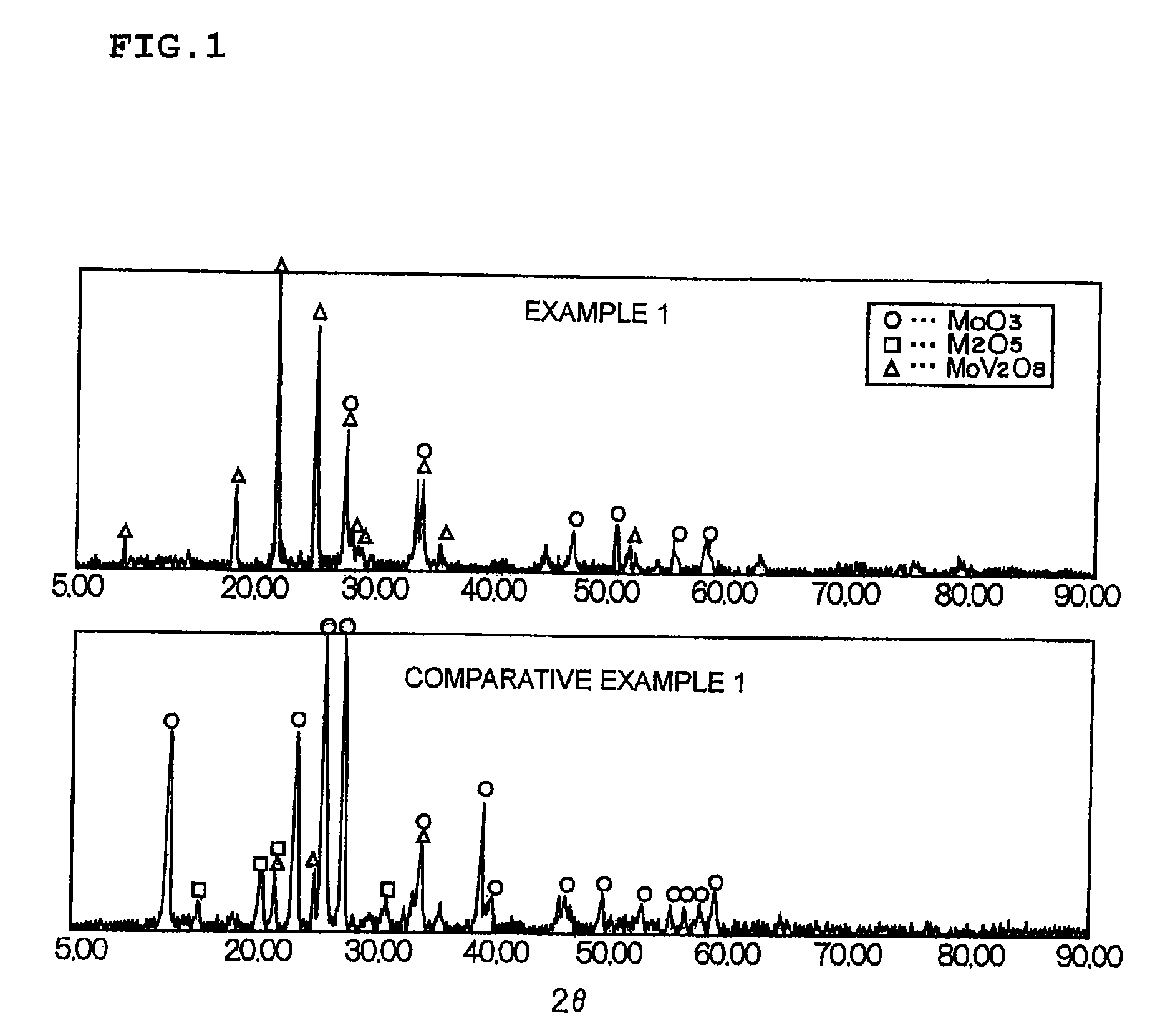Catalyst for oxidation of metal mercury
a catalyst and metal mercury technology, applied in metal/metal-oxide/metal-hydroxide catalysts, physical/chemical process catalysts, separation processes, etc., can solve the problems of oxidizing metal mercury, minor elements, and known toxic to living organisms, and achieve high performance, efficient oxidation of metal mercury, and high catalyst oxidation performance
- Summary
- Abstract
- Description
- Claims
- Application Information
AI Technical Summary
Benefits of technology
Problems solved by technology
Method used
Image
Examples
example 1
[0027]Titanic oxide, ammonium paratungstate, water and silica based inorganic fiber were mixed and kneaded by use of a kneader to obtain catalyst paste having a composition of Ti / W=95 / 5 (atomic ratio). Separately from this, SUS430 band steel was processed into a metal lath to obtain a mesh-form base material having a mesh opening of about 2 mm. On the base material, the aforementioned catalyst paste was placed. The paste was fitted in the openings and on the surface of the mesh-form base material by operating a pressure roller thereon to obtain a plate-like product having a thickness of 0.7 mm. The plate-like product was dried at 150° C. for 2 hours and baked at 500° C. for 2 hours in the air to obtain a plate-like porous carrier.
[0028]Ammonium molybdate and vanadium sol (VO2 sol: 20 wt %) were mixed to as to obtain a Mo / V atomic ratio of 1 / 1 and vaporized, dried and solidified at 150° C. for about 2 hours. The obtained powder was baked at 500° C. for 2 hours in the air and pulveriz...
example 2
[0029]A plate-like catalyst was prepared in the same manner as in Example 1 except that the vanadium material was changed from vanadium sol to vanadyl oxalate. Also in this Example, the Mo—V catalyst is carried in layers only on the surface of the plate-like porous carrier and formed of a Mo—V complex oxide as a main component.
example 3
[0039]To the Mo—V catalyst powder according to Example 1, silica powder was added as a diluent. Thereafter, an appropriate amount of water was added to obtain 20 wt % mixed slurry having a molar mixing ratio of silica powder to the Mo—V catalyst powder of 90 / 10. Subsequently, the aforementioned plate-like porous carrier was soaked in the mixed slurry. Thereafter, liquid was drained and dehydration was performed at 150° C. for 2 hours. After that baking was performed at 500° C. for 2 hours in the air to prepare a plate-like catalyst having a catalyst in an amount of 150 g / m2 (the thickness of catalyst layer: 0.15 mm).
PUM
| Property | Measurement | Unit |
|---|---|---|
| temperature | aaaaa | aaaaa |
| thickness | aaaaa | aaaaa |
| thickness | aaaaa | aaaaa |
Abstract
Description
Claims
Application Information
 Login to View More
Login to View More - R&D
- Intellectual Property
- Life Sciences
- Materials
- Tech Scout
- Unparalleled Data Quality
- Higher Quality Content
- 60% Fewer Hallucinations
Browse by: Latest US Patents, China's latest patents, Technical Efficacy Thesaurus, Application Domain, Technology Topic, Popular Technical Reports.
© 2025 PatSnap. All rights reserved.Legal|Privacy policy|Modern Slavery Act Transparency Statement|Sitemap|About US| Contact US: help@patsnap.com

